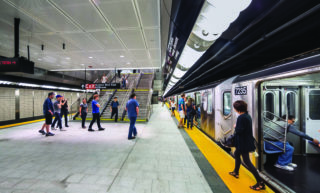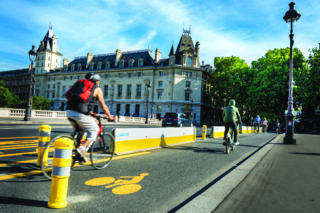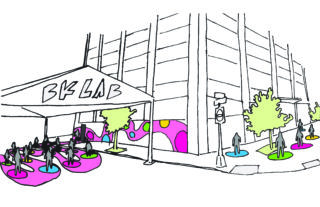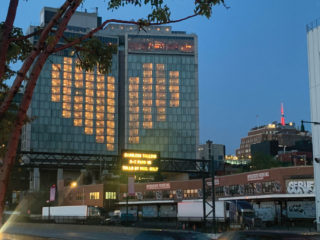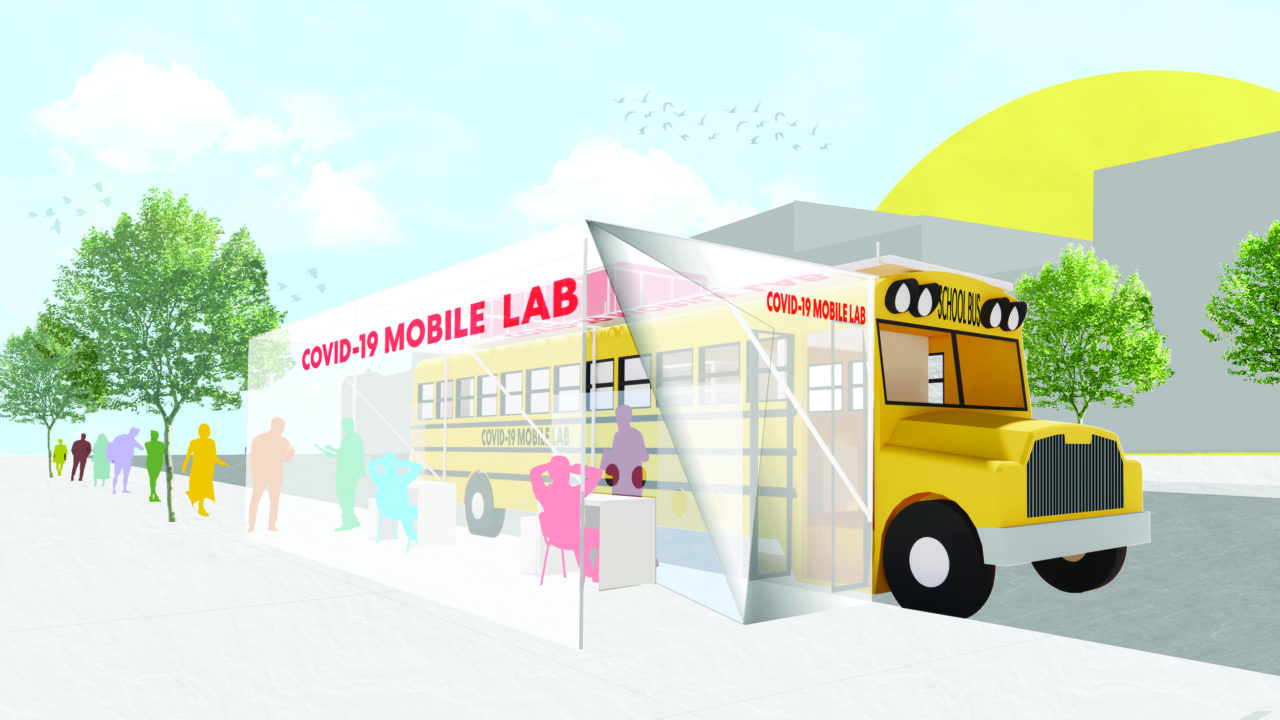
Our “Street Level” column usually covers new public-facing projects in New York City. At this moment defined by COVID-19, however, architects are connecting with New Yorkers in other, more immediate ways: Their work can be found in the six feet between pedestrians and on the faces of essential workers.
In cities like New York, the recommended social distance is difficult to achieve outside a select few streets closed to traffic and opened up for pedestrian use. As illustrated by a data visualization called Sidewalk Widths NYC, created by computational designer Meli Harvey of the urban innovation organization Sidewalk Labs, social distancing is challenging—if not impossible—to maintain in most of the city’s sidewalks. With the majority of her map ablaze in the yellow, orange, and red that suggest a narrower pathway, Harvey’s work paints the average city sidewalk width of between five and 10 feet as an overlooked aspect of crucial infrastructure that also now presents the omnipresent threat of disease.
The New Yorkers at the highest risk are those working on the front lines. During an astounding shortage of personal protective equipment (PPE) like masks, gloves, and face shields, healthcare workers and medical centers are left exposed and in need. While Governor Andrew Cuomo has been fighting at a federal level to use the Defense Production Act to get private manufacturers to help build critical equipment, production has ramped up at a grassroots level to construct, assemble, and distribute PPE to local healthcare facilities.

Jay Valgora, FAIA, Cornell University alum and founder of STUDIO V Architecture, is an example of someone seeing this process through end to end. STUDIO V has been producing thousands of PPE visor units, and Valgora has personally biked them across the East River with his son Jesse, an architecture student at Syracuse University. Their work is part of Operation PPE, a rapidly expanding collaboration between Cornell’s College of Architecture, Art, and Planning, led by Jenny Sabin, and her transdisciplinary design research lab, Sabin Lab, to 3D-print and laser-cut materials for protective face shields.
After an urgent request from Kirstin Peterson, assistant professor of electrical and computer engineering in Cornell’s College of Engineering, to make PPE for Weill Cornell Medicine in New York City, Sabin reopened the university’s Digital Fabrication Lab in Ithaca and assembled an elite league of faculty, staff, students, and alumni like Valgora practicing across the state to start printing equipment—all within the span of 24 hours. Fielding the late-night email from Sabin, Valgora woke up, walked over to the fabrication lab at his studio three blocks away from his Manhattan apartment, yanked out the 3D printers, hauled them back home, and promptly turned his family’s loft into a visor manufactory.
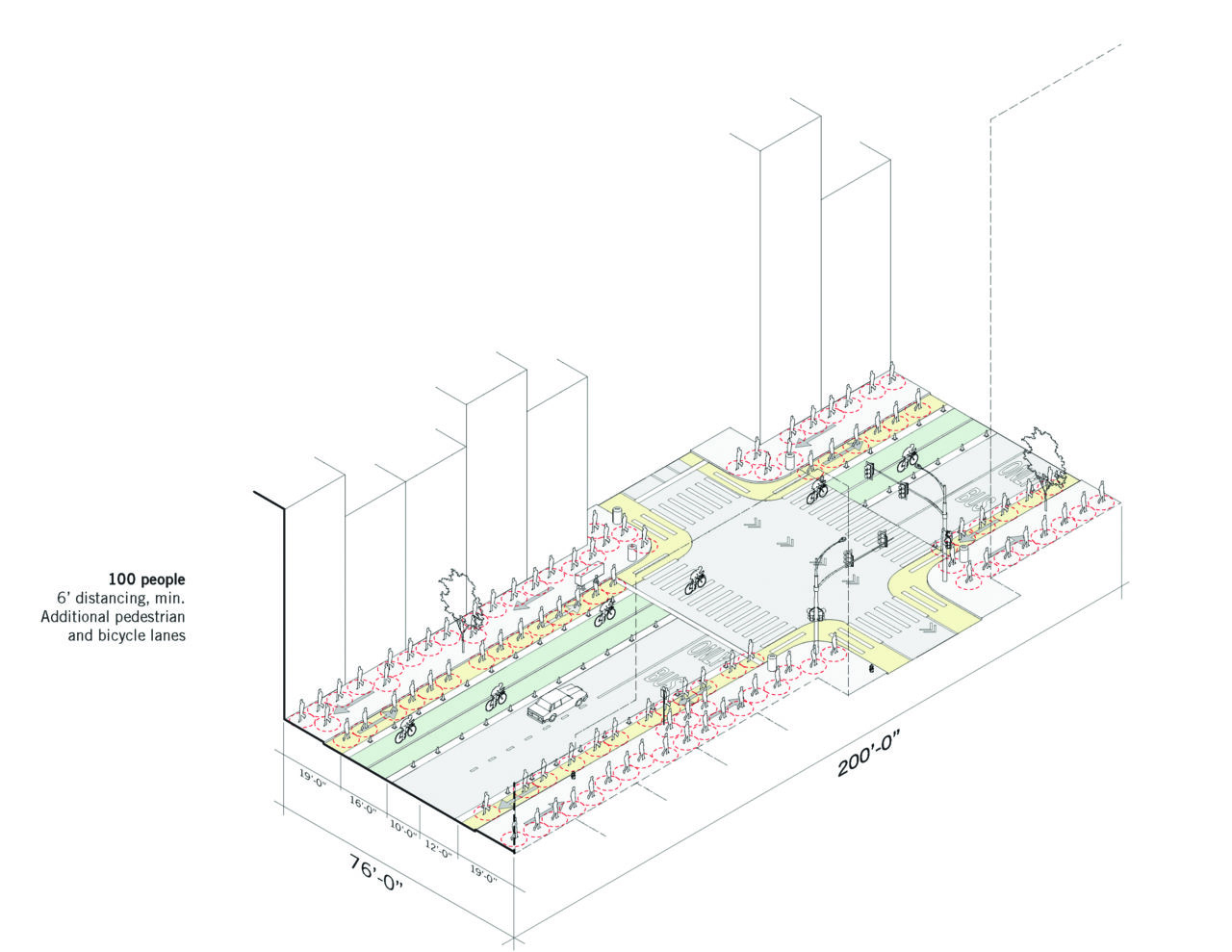
The efforts of grassroots production would be all for naught without the equipment actually making it to its final destination, which is why Valgora and his son have also created a website of resources for interested makers and a Slack channel to coordinate the crucial next steps of sterilization, assembly, and delivery. Volunteers have been working in maker spaces like NYC Resistor in Downtown Brooklyn to package and distribute PPE materials after they’ve been safely dropped off by the city’s expanding network of urban makers.
Other strategies to combat the disease are oriented around the need for more widespread and rapid testing. Perkins and Will’s New York studio, alongside the firm’s Danish affiliate, Schmidt Hammer Lassen, and Arup, has delivered a plan to retrofit out-of-use school buses into mobile testing labs. Meant to meet the needs of more densely packed and economically diverse urban areas like New York City, the retrofitted design is easily replicable to offer mobilized support to those that need it most.

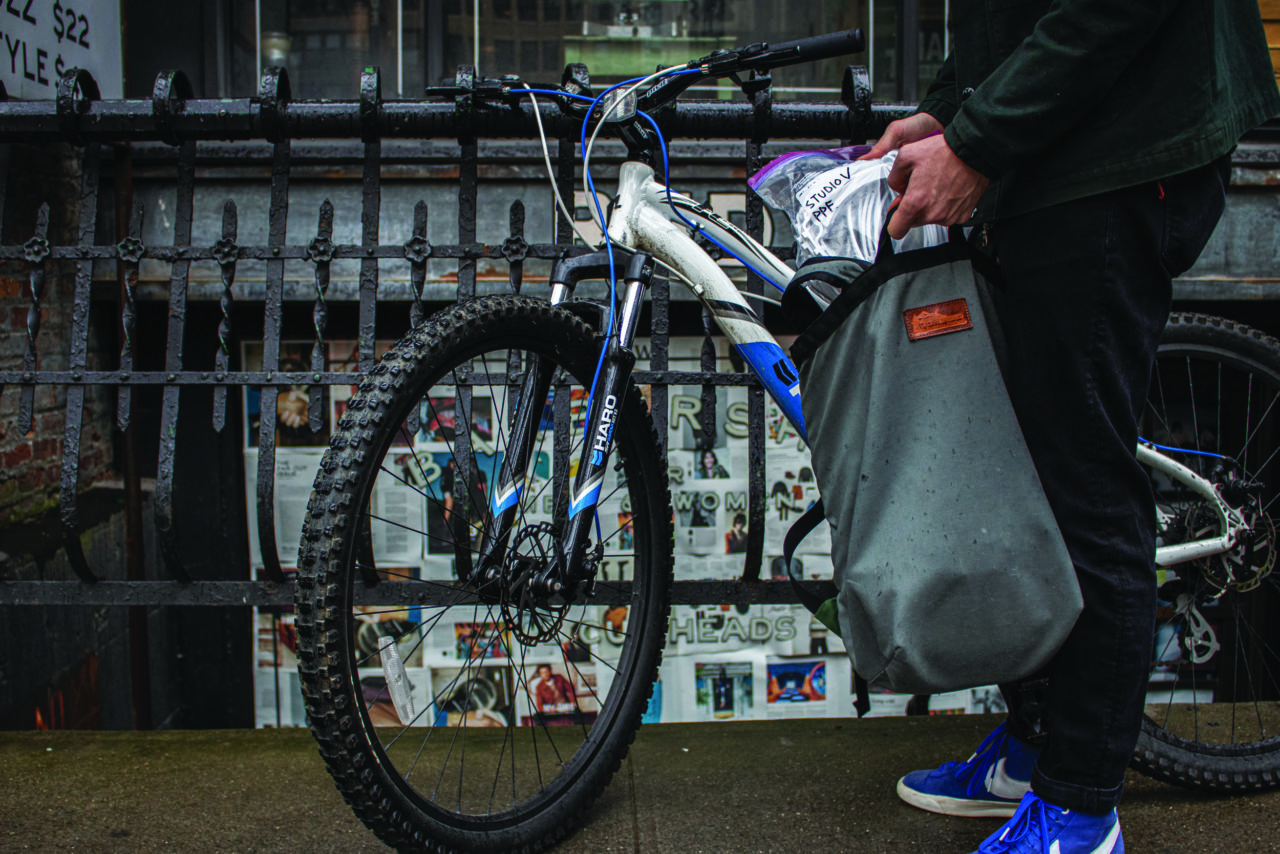
According to Mariana Giraldo, Perkins and Will architect and strategic planning specialist, “It is the underserved communities that need our urgent help at this time.” Her team hopes the design of these mobile testing labs will offer antibody testing and administer vaccines—once approved—to the city’s most vulnerable populations.
In times like these, having a plan in the works can feel like a powerful weapon, even if it’s just the sketch of a plan. The Princeton University School of Architecture awarded professors Paul Lewis, FAIA, and Guy Nordenson a research grant to develop their Manual of Urban Distance: Strategies for Reconfiguring the City. The guide proposes spatial strategies for limiting the spread of diseases in public spaces like sidewalks, parks, buses, and retail environments in densely populated cities as they move forward with social distancing. Lewis, principal at LTL Architects in New York, says that one of their big picture goals is to “develop a visual language that makes the important scientific findings more legible” with a level of precision that practicing architects like themselves are used to deploying on a regular basis.
To track and help coordinate the groundswell of activity, the AIA New York Chapter formed the COVID-19 Unified Task Force in late March under the leadership of Illya Azaroff, president-elect of AIA New York State. While the task force first focused on immediate needs, such as producing PPE and advising on temporary health facilities, the team is now looking at long-term civic and design issues related to COVID-19. The group aims to partner with city agencies to create solutions and guidance for the complexities of a post-pandemic New York. Azaroff, keenly aware of how lessons learned in New York can be applied to other densely populated cities, believes the ways in which New York rises to the challenge of helping its population survive a global pandemic will “indicate some solutions that work for other places yet to feel the worst of it.”
In the interim, AIA members across the city and state are using the tools at their disposal to provide more grassroots-style responses that have grown to merit government attention. Practitioners like Valgora are teaming with the Unified Task Force to help synchronize the efforts of offshoot factions and enable widespread expansion. Despite the alarmingly high estimations of PPE needed at hospitals nationwide, Valgora’s optimism is unfaltering. “Efforts are only going to increase,” he says, “as these networks continue to grow and grow.”
Polly Adams (“Street Level”) is a design researcher and writer based in Brooklyn. A recent graduate of the rigorous one-year master’s program in the Design Research, Writing & Criticism program at the School of Visual Arts, she’s interested in designed experiences that shape individual identity and codify social behavior.











